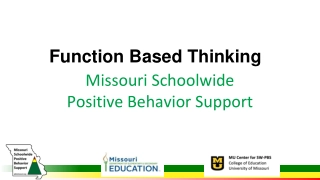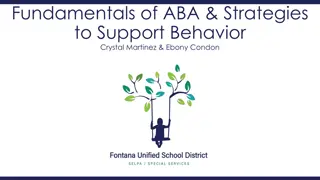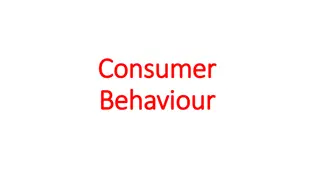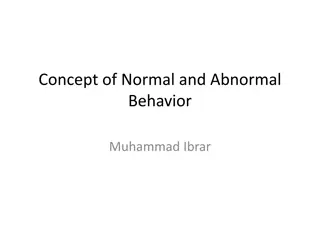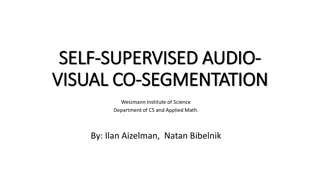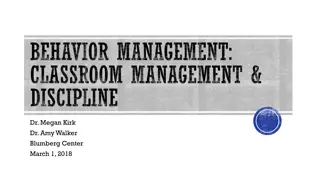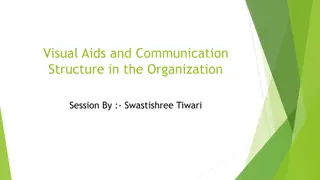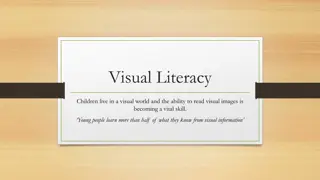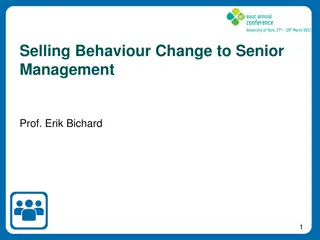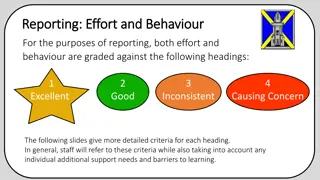Enhancing Behavior Through Visual Support Strategies: Session Insights
Explore the second session of the Function Fridays for Better Behavior series focusing on utilizing visual strategies to address behavioral concerns effectively. The session covers functions of behavior, leveraging visual supports preventatively, and integrating timers into daily routines. Mitigate potential bias, understand objectives, follow the agenda for a structured discussion, and learn about using visual supports for conveying expectations, task completion, transitions, and more.
Download Presentation

Please find below an Image/Link to download the presentation.
The content on the website is provided AS IS for your information and personal use only. It may not be sold, licensed, or shared on other websites without obtaining consent from the author.If you encounter any issues during the download, it is possible that the publisher has removed the file from their server.
You are allowed to download the files provided on this website for personal or commercial use, subject to the condition that they are used lawfully. All files are the property of their respective owners.
The content on the website is provided AS IS for your information and personal use only. It may not be sold, licensed, or shared on other websites without obtaining consent from the author.
E N D
Presentation Transcript
Function Fridays for Better Behavior Series Session Two: Functions of Behavior You are muted throughout the ECHO session and please use chat or raise your hand to prompt the facilitator when you need to speak. If you are logged in to today s session with another identifier, you can change your name by hovering over your participant video/name box and clicking on the three dots in the upper right-hand corner and choosing rename to change to your first and last name.
Presenters: Leni Swails, PhD Skylar Bellinger, PhD Alice Zhang, PhD, BCBA-D Katy Tepper, PhD
Mitigating Potential Bias The information and recommendations involving clinical medicine is based on evidence that is currently accepted within the profession
Objectives: 1. Understand how visual strategies can mitigate behavioral concerns 2. Understand uses for visual supports in a preventative way 3. Understand how to integrate timers into a daily schedule
Agenda Introductions and Check-In (9:00-9:10) Didactic Presentation (9:10-9:25) Case Presentation (9:25-9:35) Case Presentation Form: https://redcap.kumc.edu/surveys/?s=JMNYRN7HMJ Group discussion (9:35-9:55) Follow-up questions Suggestions Summary of Recommendations (9:55-10:00am) (to be emailed to presenter)
Introductions Briefly State (2-3 sentences): Your Name Your location Target Behavior you identified
Visual Supports Use visual supports (calendars, schedules, task strips, chore charts, reinforcement charts) to help convey expectations, complete steps to a task, anticipate upcoming activities, help make transitions to next activities, and show reinforcements for completion. Visual supports help individuals develop organization habits and build independence rather than rely on directions and reminders from others.
Uses for visual supports Schedule First, then To-do list Reward system Social stories Labeling Activity tracking
What are the functions of behavior? SEAT Sensory Escape/Avoid Attention Tangible
What should I do when Jenny hits? WHY is Jenny hitting? When is she most likely and least likely to hit? Who does she hit? What is she doing when she hits? Where is she? FBA
Functional Behavior Assessment (FBA) FBA Functional (experimental) analysis Indirect FBA Descriptive FBA Rating Scales ABC recording Scatterplot Interview 13
Functional Behavior Assessment/Functional Analysis Identify the target behavior Operationally define the behavior Systematic Data Collection Antecedents Consequences Function Based Behavior Support Plan 1. What s maintaining the behavior (making it likely to occur)? 2. How can I address the function in the behavior support plan?
Aggressive Outbursts Hitting, kicking, throwing and crying 2-3 times per week Hitting grandma multiple times per day Systematic Data Collection Talking to her, trying to calm her down, attention from grandma and teachers, delaying completion of task When told to do something that she did not want to do. When grandma was busy. What s maintaining the behavior? What is contributing?
Poll: What is the function of Jenny s hitting? A) Sensory B) Escape C)Attention D) Tangible E) B and C
Answer E (Escape AND Attention) How can we address the function? Provide praise, attention and rewards for task completion. Visual representation of expectations and rewards (token economy, sticker chart). Ignore hitting, walk away.
Poll: How can we address the function? A) After she hits, calmly talk to her about why it is not okay to hit. B) Provide praise and attention when for appropriate behavior. Praise and reward task completion, C) Walk away and ignore hitting while not removing the demand. D) Teach and honor appropriate ways to request a break from a task. E) Give her a big hug or weighted vest to help her feel calm. F) C, D, and E
Answer How can we address the function? A) After she hits, calmly talk to her about why it is not okay to hit. B) Provide praise and attention when for appropriate behavior. Praise and reward task completion, C) Walk away and ignore hitting while not removing the demand. D) Teach and honor appropriate ways to request a break from a task. E) Give her a big hug or weighted vest to help her feel calm. F) B, C, and D
How does trauma contribute to behavior? http://www.youtube.com/watch?v=s31HdBeBgg4 Exposure to high level of stress shown to alter size and neuronal architecture of amygdala, hippocampus and pre-frontal cortex resulting in: Impaired Mood Control/ Extreme Fight or Flight Impaired Memory Loss of executive functioning/ impulse control
Trauma and Behavior Trauma may have an important role in creating the behavior, but other things may be triggering or maintaining it. We can t control past trauma, but we can: Offer resources and support to help the child process the trauma in a healthy way. Create positive environments, experiences and relationships (parent child, positive adult mentor) to help buffer the impact of trauma. Bernier, Whipple & Carlson, 2010. Be consistent in our intervention and response. Reduces anxiety and increases trust in adults Support the family in dealing with the trauma and be patient. Consider how the trauma may impact our intervention. Do we need modifications? Child s response may be slower and need more repetition, guidance and support. (Hudson, Beilke and Many (2016). Work toward trauma informed schools and systems https://www.nctsn.org/trauma-informed-care/creating-trauma-informed-systems
Thank You! See you on Friday, Feb. 14th Function Fridays for Better Behavior ECHO Series Session Three: Prevention
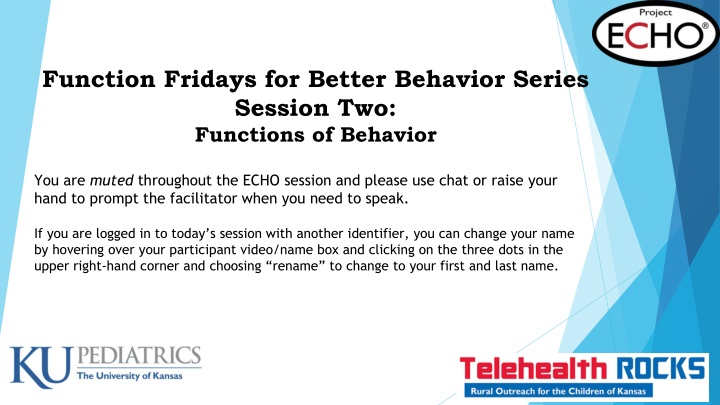

![textbook$ What Your Heart Needs for the Hard Days 52 Encouraging Truths to Hold On To [R.A.R]](/thumb/9838/textbook-what-your-heart-needs-for-the-hard-days-52-encouraging-truths-to-hold-on-to-r-a-r.jpg)
